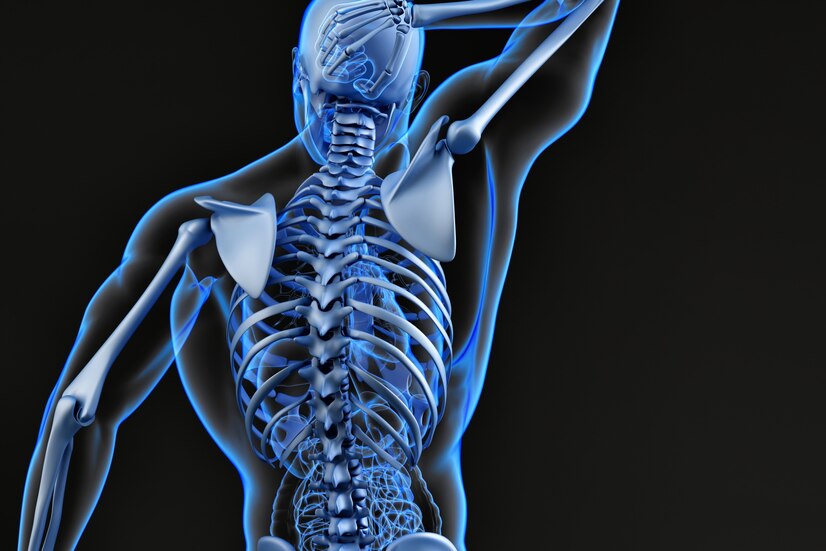The back, also known as the dorsum, is a crucial anatomical structure that plays a significant role in human posture, movement, and support. Comprising various muscles, bones, and ligaments, the back is a complex region of the body that requires careful attention and understanding. In this article, we will delve into the intricacies of the back’s anatomy, exploring its components, functions, and common issues.
The back, a marvel of anatomical design, serves as the pillar of our body, supporting us through every movement, every twist, and every turn. From the graceful arch of the cervical spine to the sturdy foundation of the lumbar region, the back is a symphony of bones, muscles, and ligaments working in harmony to uphold our posture and facilitate our mobility.
In this comprehensive guide, we embark on a journey to unravel the mysteries of the back’s anatomy. We delve deep into its intricate structure, exploring the nuances of each region and the functions they perform. From the graceful curve of the cervical spine to the robust framework of the lumbar region, we seek to understand the complexities that make the back a marvel of nature.
The Structure of the Back
The back can be divided into several key regions, each with its own unique anatomy and function. These include the cervical, thoracic, lumbar, and sacral regions, as well as the coccyx. Each region consists of vertebrae, muscles, nerves, and other structures that contribute to its overall function.
Cervical Region
The cervical region, located in the upper portion of the back, comprises the first seven vertebrae of the spinal column. These vertebrae, known as C1 to C7, form the cervical spine, which supports the weight of the head and allows for neck movement. The cervical region also contains important nerves and blood vessels that supply the head and neck.
Thoracic Region
Situated below the cervical region, the thoracic region consists of twelve vertebrae known as T1 to T12. These vertebrae form the thoracic spine, which provides structural support for the rib cage and protects the vital organs housed within the chest cavity. The thoracic region also plays a role in breathing and trunk movement.
Lumbar Region
The lumbar region, located in the lower back, is composed of five vertebrae referred to as L1 to L5. These vertebrae are the largest and strongest in the spinal column, bearing the majority of the body’s weight. The lumbar region is essential for stability, posture, and movement, particularly in activities such as bending and lifting.
Sacral and Coccygeal Regions
Below the lumbar region, the sacral region consists of five fused vertebrae known as the sacrum. The sacrum connects the spine to the pelvis and plays a crucial role in weight transfer and stability. The coccygeal region, or coccyx, is composed of four fused vertebrae that form the tailbone.
Muscles of the Back
The back is home to numerous muscles that enable movement, support, and posture. These muscles can be broadly categorized into superficial and deep muscles, each serving specific functions.
Superficial Muscles
The superficial muscles of the back are located closer to the surface and are responsible for movements such as extension, flexion, and rotation. Some of the key superficial muscles include the latissimus dorsi, trapezius, and rhomboids.
Deep Muscles
Deeper within the back are the intrinsic muscles, which play a crucial role in stabilizing the spine and maintaining proper posture. These muscles include the erector spinae group, multifidus, and transversospinalis muscles.
Common Issues and Injuries
Despite its strength and resilience, the back is susceptible to various issues and injuries that can cause pain and discomfort. Some common problems include muscle strains, ligament sprains, herniated discs, and degenerative conditions such as osteoarthritis.
Conclusion
In conclusion, the back is not merely a passive structure but a dynamic masterpiece of nature’s engineering. From the graceful arch of the cervical spine to the sturdy foundation of the lumbar region, every aspect of its anatomy reflects a delicate balance of form and function. By understanding the intricacies of the back’s anatomy, we gain insight into its resilience, its vulnerabilities, and its remarkable capacity for adaptation.
So let us marvel at the wonders of the back, this intricate tapestry of bones, muscles, and ligaments that serves as the cornerstone of our physical existence. And let us remember to cherish and nurture this invaluable asset, for in the health and well-being of our back lies the foundation of our mobility, our strength, and our vitality.
FAQs
What are the common causes of back pain?
Back pain can be caused by various factors, including muscle strains, ligament sprains, herniated discs, osteoarthritis, poor posture, and spinal abnormalities.
How can I prevent back injuries during physical activity?
To prevent back injuries, it’s essential to warm up before exercising, use proper lifting techniques, maintain good posture, strengthen the core muscles, and listen to your body’s signals to avoid overexertion.
What are some effective exercises for strengthening the back muscles?
Exercises such as plank variations, bird-dog, deadlifts, rows, and bridges can help strengthen the muscles of the back and improve stability and posture.
When should I seek medical attention for back pain?
If back pain persists for more than a few days, worsens over time, is accompanied by numbness or weakness in the legs, or is the result of a traumatic injury, it’s important to consult a healthcare professional for proper diagnosis and treatment.
Are there any lifestyle changes that can help alleviate back pain?
Yes, maintaining a healthy weight, practicing good posture, avoiding prolonged sitting or standing, staying active with regular exercise, and managing stress can all contribute to reducing back pain and promoting spinal health.







